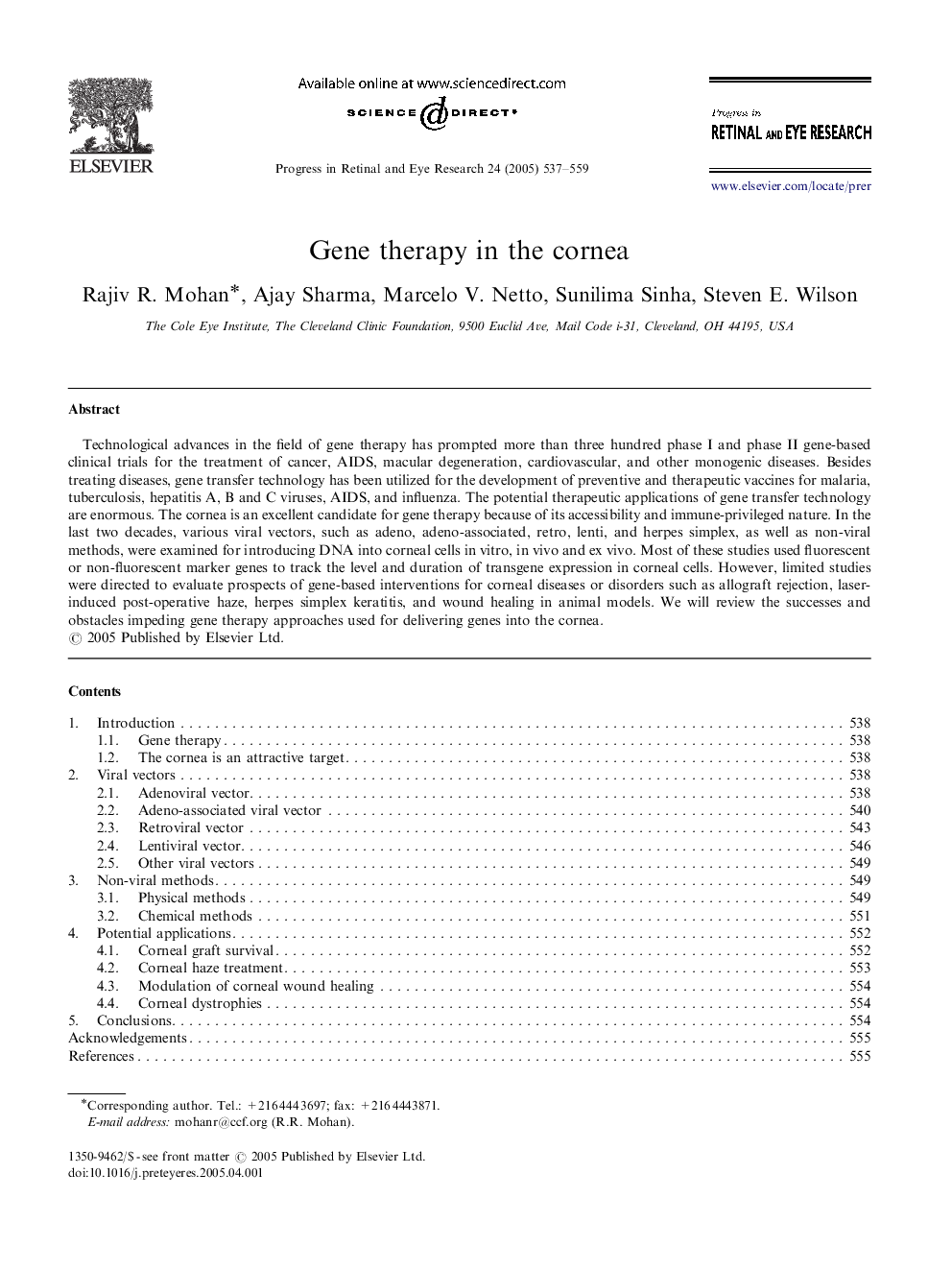| Article ID | Journal | Published Year | Pages | File Type |
|---|---|---|---|---|
| 9348279 | Progress in Retinal and Eye Research | 2005 | 23 Pages |
Abstract
Technological advances in the field of gene therapy has prompted more than three hundred phase I and phase II gene-based clinical trials for the treatment of cancer, AIDS, macular degeneration, cardiovascular, and other monogenic diseases. Besides treating diseases, gene transfer technology has been utilized for the development of preventive and therapeutic vaccines for malaria, tuberculosis, hepatitis A, B and C viruses, AIDS, and influenza. The potential therapeutic applications of gene transfer technology are enormous. The cornea is an excellent candidate for gene therapy because of its accessibility and immune-privileged nature. In the last two decades, various viral vectors, such as adeno, adeno-associated, retro, lenti, and herpes simplex, as well as non-viral methods, were examined for introducing DNA into corneal cells in vitro, in vivo and ex vivo. Most of these studies used fluorescent or non-fluorescent marker genes to track the level and duration of transgene expression in corneal cells. However, limited studies were directed to evaluate prospects of gene-based interventions for corneal diseases or disorders such as allograft rejection, laser-induced post-operative haze, herpes simplex keratitis, and wound healing in animal models. We will review the successes and obstacles impeding gene therapy approaches used for delivering genes into the cornea.
Related Topics
Life Sciences
Neuroscience
Sensory Systems
Authors
Rajiv R. Mohan, Ajay Sharma, Marcelo V. Netto, Sunilima Sinha, Steven E. Wilson,
